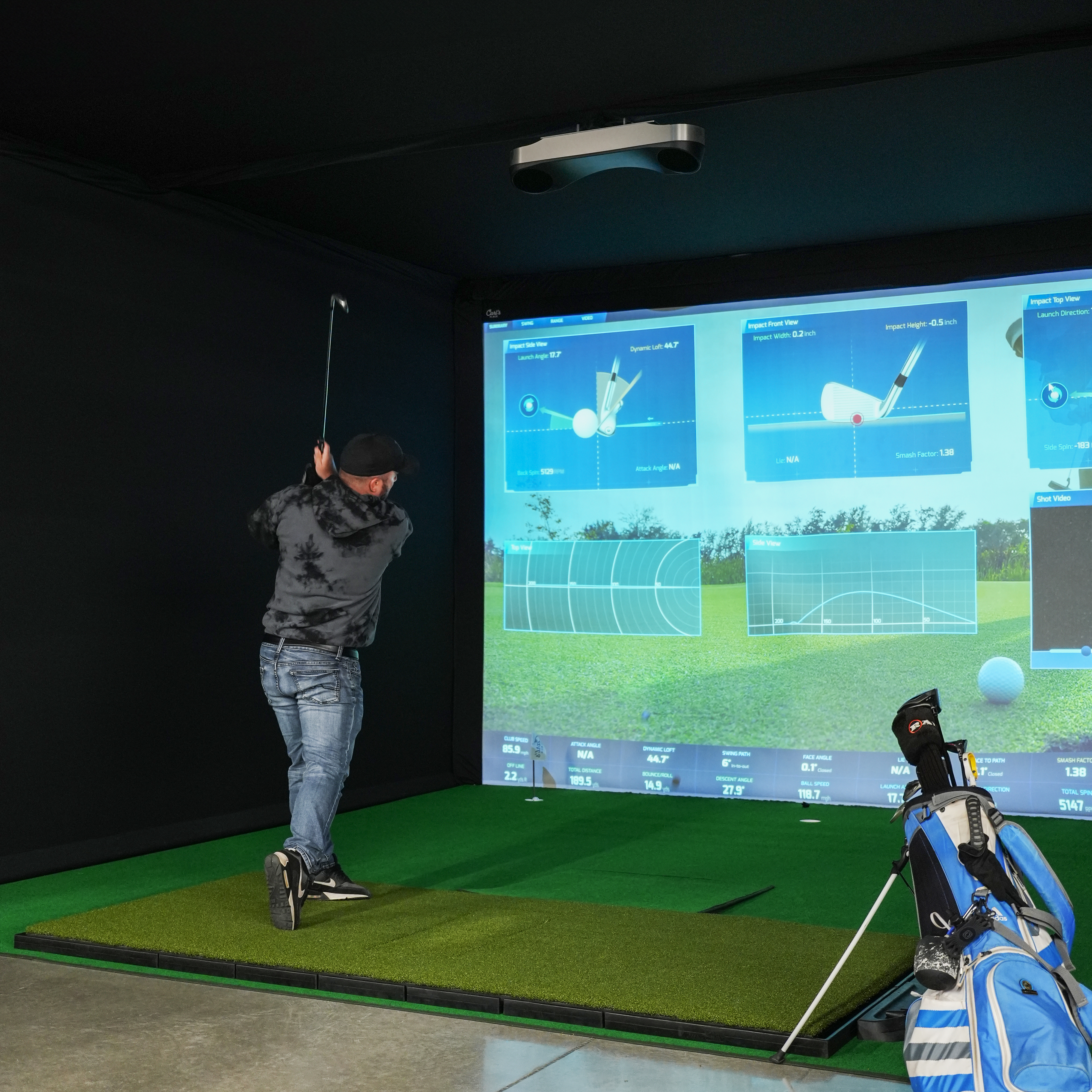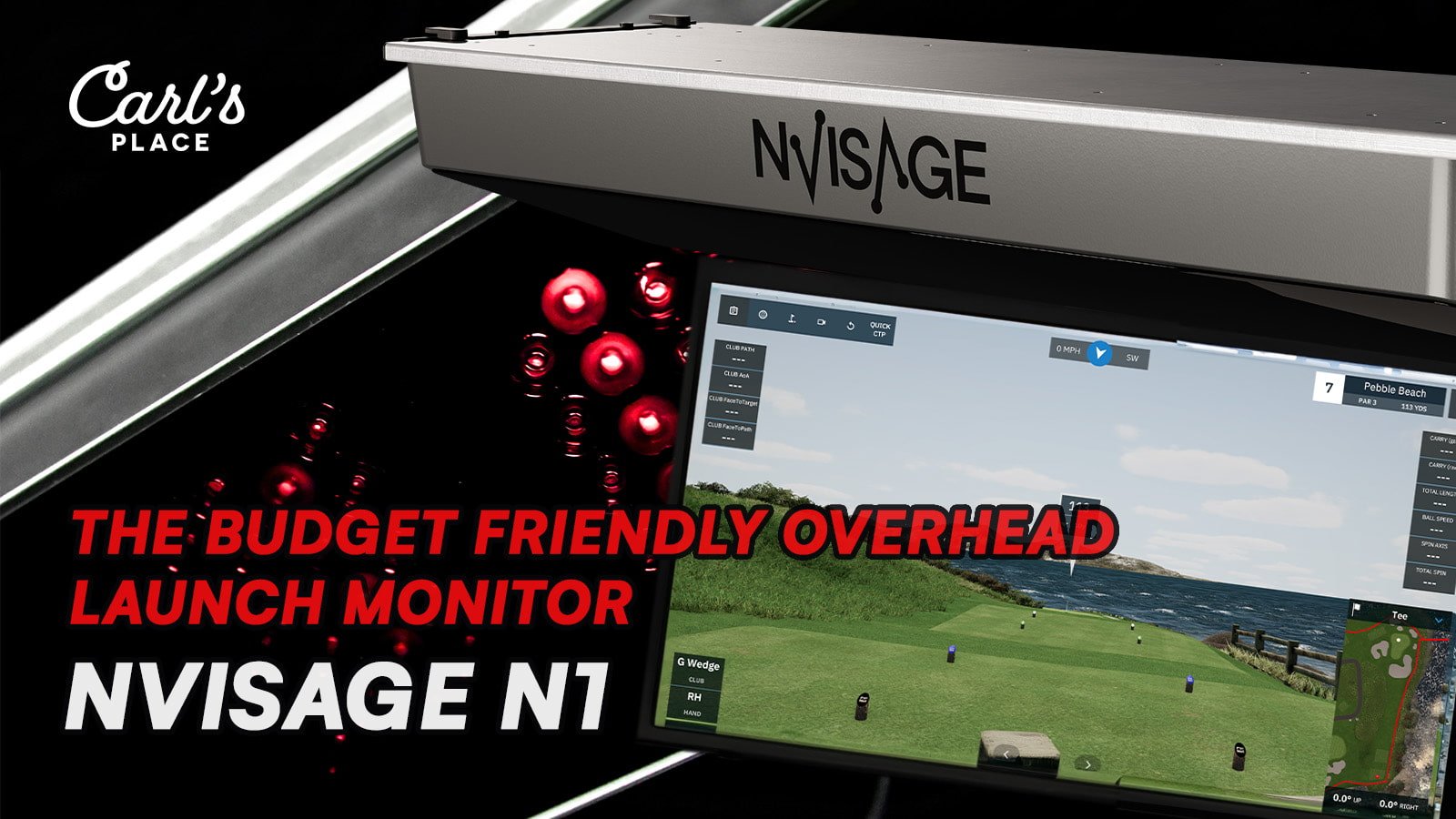When it comes to fine-tuning your golf game, launch monitors play a crucial role. But did you know that the type and positioning of your launch monitor can affect the accuracy of the data you get, including launch angles?
In this post, we'll dive into the nuances of launch angles and explore how overhead and floor-based launch monitors measure them differently.

What Is Launch Angle In Golf?
Launch angle in golf is the angle at which the ball takes off relative to the ground (vertical launch angle) or target (horizontal launch angle) immediately after impact with the clubface.
It’s a crucial factor in determining the ball's trajectory and distance. A higher vertical launch angle generally results in a higher ball flight, while a lower vertical launch angle produces a flatter trajectory.
Achieving the optimal launch angles can significantly improve a golfer’s performance.
The Importance of Launch Monitor Alignment
For any launch monitor to provide reliable data, it must be perfectly aligned.
This includes being level, at the correct distance from the ball, and aimed precisely at your target. Misalignment can lead to discrepancies in your readings.
For instance, if your launch monitor is off by 2 degrees, it could misinterpret the ball's direction by the same amount. So, a ball traveling 1 degree to the left might be reported as traveling 1 degree to the right.
Which Launch Monitors Calculate Launch Angle Most Accurately?
Are Floor-Based Launch Monitors More Accurate?
Floor-based launch monitors that sit next to the ball/hitting area, like the Uneekor EYE MINI, SkyTrak+, and Foresight GC3 or GCQuad, are particularly sensitive to horizontal misalignment. However, they excel at measuring vertical launch angles due to their side-on view of the ball.
This makes them great for assessing carry distance accurately. But to get a precise horizontal launch angle (the direction the ball is traveling left or right), you need to ensure that the monitor is perfectly perpendicular to your screen.
Are Overhead Launch Monitors More Accurate?
On the flip side, overhead launch monitors - such as the Uneekor EYE XO2, ProTee VX, Nvisage N1, Trackman iO and so on - have a different strength. They are better at detecting the horizontal launch angle because of their top-down perspective.
This makes them more reliable for understanding the ball's flight path. However, they might struggle a bit more with the vertical launch angle compared to their floor-based counterparts.
Putting It to the Test
We ran a launch angle accuracy test using a chart on our impact screen to help us determine the approximate real-life launch angle to see these differences in action.
As you can see in the animation below, the ball hits the impact screen right around 10 degrees.

The vertical launch angle on the EYE MINI was 9.9 degrees, while the EYE XO2 read it as 8.9 degrees. This is expected, as the EYE MINI, being next to the ball, has a clearer view of the vertical launch angle.
Conversely, for the horizontal launch angle, the EYE MINI showed the ball going 0.9 degrees right, whereas the EYE XO2 showed 3 degrees left. Watching the replay confirmed the ball was indeed veering slightly left, aligning with the EYE XO2’s reading.
When it came to distance, the EYE MINI reported the ball traveling about 10-12 yards longer than the EYE XO2 did. This discrepancy arises because the EYE MINI measured a higher vertical launch angle, thus estimating more distance.
The testing team ran several more shots testing launch angles with both floor and overhead launch monitors, all with very similar results. In general, the floor launch monitor was better at measuring vertical launch angle. The overhead launch monitor was better at measuring horizontal launch angle.
Fine-Tuning for Accuracy
So, what's the takeaway? Based on our indoor and outdoor testing of launch monitors over the years, and the location in which individual launch monitors are set up, overhead launch monitors tend to be more accurate with the ball's flight path, while floor-based monitors stand out more in carry distance. These differences are minor but more noticeable with drivers.
To ensure the most accurate readings, always check your monitor's alignment. Use a bubble level to make sure your launch monitor is perfectly flat, and ensure your floor-based monitor is perpendicular to your target.
Conclusion
Understanding the strengths and weaknesses of a launch monitor can play a factor in which one you prefer, while also making a significant difference in your game. Proper alignment and calibration are key to getting the most accurate data.
If you feel like your readings are off, a quick check and adjustment might be all you need.


